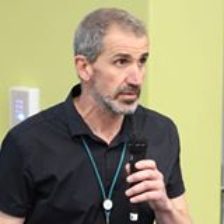
(5-minute read) – Once there was a man, Jesus, whose parables invited hearers to let go of attachments of the false self to beliefs, societal status quo and physical, material security. Or in modern terms, to let go of the primary drives of the ego. They ask hearers to risk the emptiness of subverting paradigms.
It is existentially necessary to let go of physical and emotional dependency on status before new consciousness can emerge. The new consciousness of the parables is the eternal consolation of love.
Only the true self, free of the world’s status-based value systems, can appreciate that this consolation is not based on earthly riches. It sees that solidarity with the universal community has supreme value, not only for the community, but for the psychological healing and growth of the individual.
Both Sigmund Freud and Carl Jung agreed with this concept of widening consciousness beyond the drives of the ego, to attain better mental health.
Keating summarises the conflict in perspective of the false self and the true self when he writes: “The rich man, although he saw the beggar starving at his doorstep and could easily have reached out to him, just went on eating, drinking, and reading his Wall Street Journal.”
What About the Gospel of John?
John’s Gospel delves into the inner spiritual impacts of the Jesus event on individual souls. As such, John deals with spiritual-psychological matters more so than any previous writer in the Bible. He focuses on symbol more than historical account. He stands at a critical point in the evolution of Christian spirituality from the Old Testament consciousness of prosperity and retribution to the new consciousness of unconditional, all-inclusive love.
A. Sanford, in his book Mystical Christianity. A Psychological Commentary on the Gospel of John, writes, “In the context of John’s Gospel, Jesus’ adversaries are to be understood not only historically but also symbolically. They personify the old consciousness in its opposition to the new consciousness”.
Sanford adds, “This is not to say that there were not historical encounters between Jesus and his detractors; it is to say that the important element is the archetypal or spiritual dimension of which such historical encounters are passing illustrations.”
Sanford draws on Jung’s individuation process to explain John’s Gospel. He writes:
“In the individuation process, the old egocentric ego is constantly being challenged to change by admitting into its awareness new insights, perspectives, and information that come from life experience from the unconscious. Time and again the daemonic side of the egocentric ego rejects and destroys the new trust. But behind and beyond the ego lies a great and more sinister psychic power, an archetypal or spiritual power. In the Bible, archetypal powers are represented and portrayed in what sounds to us like mythic language. The modern mind may disparage such “mythological thinking” as unscientific and fanciful, but the fact is that there is psychological truth in it.”
Movement to newness
Movement to new consciousness is preceded by letting go of the old. This letting go is not a self-disciplined adherence to some instruction or rule. It is rather a gradual acceptance of a deeper, psychological calling for dynamism or growth.
The process of communal and individual transformation is only real and sustainable if it is validated by experience. It cannot be motivated only by an imported dogma or demand.
This experience is what the mystics throughout history have described. It is the experience of growing, with liberation and loss, as we move from old consciousness to new consciousness. This makes letting go an important concept in striving for psychological health.
Experience transforms the relationship of consciousness to unconsciousness, the false self to the true self. Jung describes the source of human problems as consciousness being out of touch with the unconscious, which “is immensely wide and deep and contains a life infinitely surpassing, in kind and degree, anything known [by consciousness]”.
Bregman in her article “Psychotherapies” in Spirituality and the Secular Quest Volume 22, writes that Jung saw healing as a quest for consciousness to be reunited with its unconscious roots. She writes: “Jung expressed how individuation aims to integrate conscious and unconscious so as to result in a new, expanded totality of who one really is”.
Jung’s individuation is similar to a term that is very popular today: mindfulness. Both are about the process of becoming aware of and familiar with our selves. We can only do this by letting go of the programs in our minds that we come to believe constitute who we are. Individuation (or mindfulness) requires a seeing beyond the conventions that define our reality. Only then can we see more of who we are.
A revolutionary man
Jesus, with his revolutionary parables, sought to break the hearer of the time down in order to open to newness. The central message of the parables is clear. It is to see beyond the status quo of class isolation to a deeper reality of unconditional, selfless love that connects all.
It’s no wonder he was perceived as such a serious risk by the guardians of societal status quo that they apparently conspired to execute him. Today his parables are as relevant to individuals and societies as they were two thousand years ago.
Perhaps they are more relevant than ever before as we witness a global increase in societal polarization and nations turning inward. And as we grapple with what it is to live a life of personal meaning in the face or unprecedented suffering and environmental destruction.
Let us find the radical freedom spoken of in the parables to let go and open to new consciousness, to growth and to finding deeper meaning. Then maybe our children’s children will say about us, “Once there was a man…”

Leave a Reply